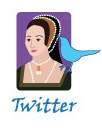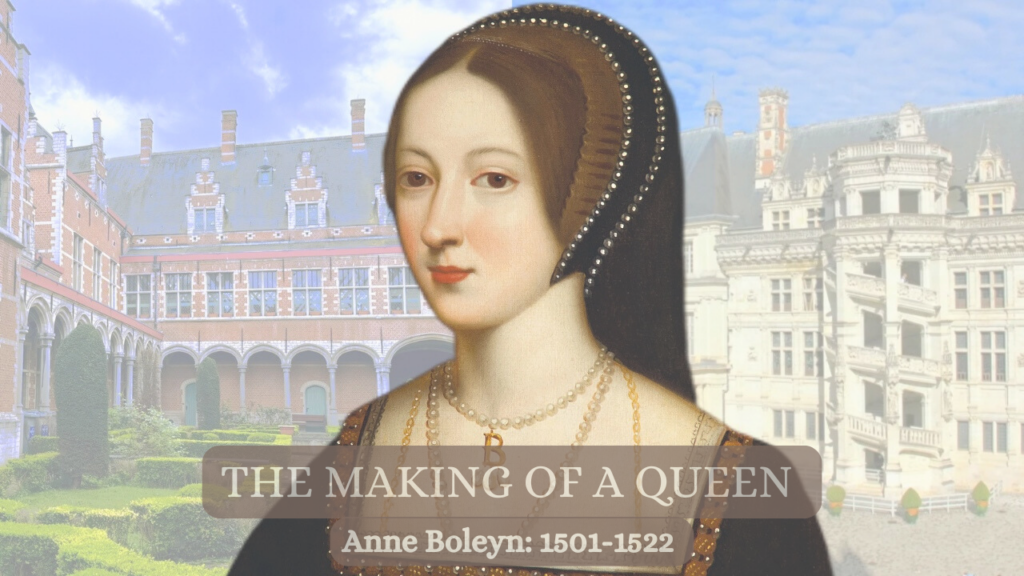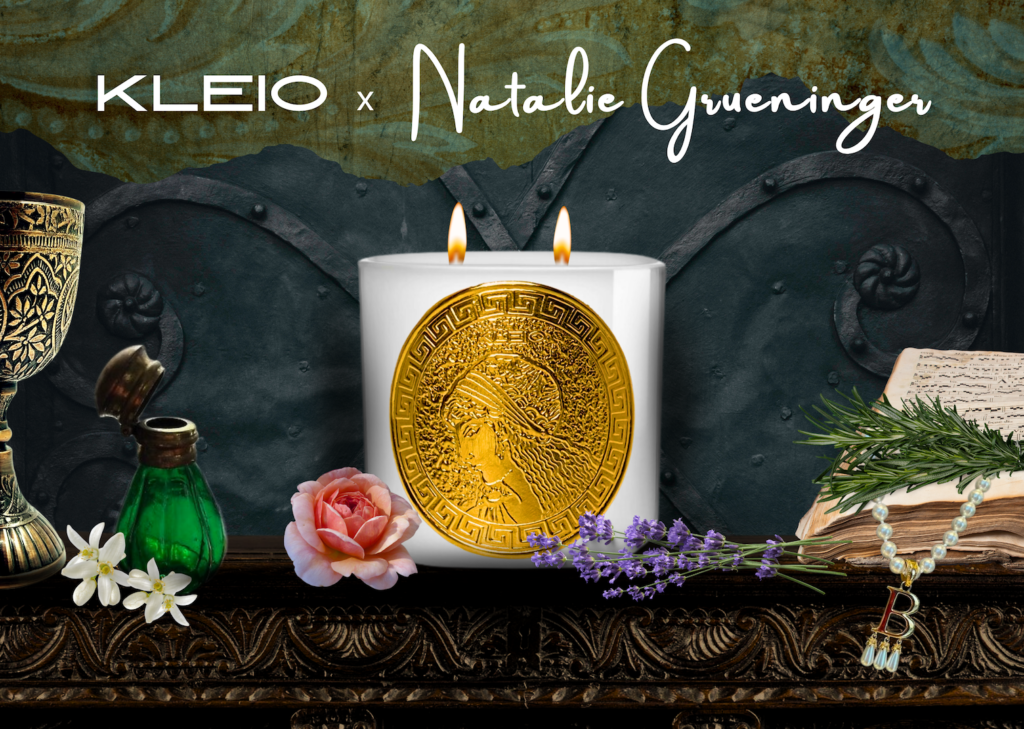I am delighted to share with you a guest post from Tamise Hills from The Lady Jane Grey Reference Guide Blog.
Another look at…Lady Jane Grey’s appearance
By Tamise Hills
As Eric Ives wrote in 2009, ‘the immediate frustration in the case of Jane Grey is that we have only one detailed report of her appearance.’ (1)
The fullest contemporary description of Lady Jane Grey was supposedly written by Baptisa Spinola, a Genoese merchant, who witnessed her procession to the Tower of London to be proclaimed Queen of England on July 10 1553. Not only did he describe the procession but he was close enough to Jane, to describe her appearance in detail.
‘Today I saw Lady Jane Grey walking in a grand procession to the Tower. She is now called Queen, but is not popular, for the hearts of the people are with Mary, the Spanish Queen’s daughter. This Jane is very short and thin, but prettily shaped and graceful. She has small features and a well-made nose, the mouth flexible and the lips red. The eyebrows are arched and darker than her hair, which is nearly red. Her eyes are sparkling and reddish brown in colour. I stood so near her grace that I noticed her colour was good but freckled. When she smiled she showed her teeth, which are white and sharp. In all a gracious and animated figure. She wore a dress of green velvet stamped with gold, with large sleeves. Her headdress was a white coif with many jewels….The new Queen was mounted on very high chopines to make her look much taller, which were concealed by her robes, as she is very small and short.’
Baptisa Spinola, 10 July 1553 (2)
It has now been over four years since Leanda de Lisle first announced that this famous description of Jane was a fake, created by Richard Davey (3). Dr Stephan Edwards has also conducted his own research into the Spinola letter and concurs with de Lisle. (4)
Other contemporary accounts of Jane that exist, are either frustratingly vague in terms of her appearance or make no mention of it at all!
However, new evidence of Jane’s appearance emerged, in November 2013, when Dr Edwards announced on his website, Some Grey Matter, his discovery of two letters that mention Jane. Edwards writes that, ‘To my knowledge, neither of these letters has ever been published in English, and no historian writing on the subject of Jane Grey or the succession dispute of 1553 has ever cited them. They are presented here for what I believe is the first time in the modern era.’ (5)
The letters appear in the third volume of ‘Lettere di Principi’ a series of ‘a collection of letters to, from, or about a wide variety of early-sixteenth-century European rulers, noblemen, and princes of the Roman Catholic Church’ (6), which was published, in 1577 by Giordano Ziletti.
According to Edwards, the author and recipient of the letters are unknown but he thinks that they were written by a member of the Venetian diplomatic embassy. In the first letter dated or written on, 24th July 1553, in the translation by Edwards, the author writes the following about Jane.
‘The first-borne daughter of the Duchess of Suffolk is a pretty and comely young lady of beautiful intellect, letters, and praiseworthy habits, named Jane.’ (7)
It is not clear if the author witnessed the events mentioned in his letter and actually saw Jane or if he received the details from an eye witness. Two events are described at which an opinion of Jane’s appearance could have been formed, although in the context of the letter, Jane’s description refers to an explanation of who she was in dynastic terms, rather than in context of these events.
Firstly there are details of Jane’s wedding to Guildford Dudley on 25th May 1553.
‘So that finally the wedding was conducted with such splendor that I have not seen anything similar in this kingdom. One of the days of the festivities, Jane not being out to dine in public, the Ambassador of France and that of Venice took her place, between two Marquesses, one on the right and the other on the left. At another table were Duchesses and Baronesses. The Ambassadors’ table was served as though Jane was there, that is to say by Lords and honored gentlemen, and kneeling with every ceremony toward the Ambassadors as would be shown to the King at a solemn banquet.’ (7)
Then there was a description of Jane’s procession to the Tower.
‘Came this Lady Jane on the 10th of July from Syon to the Tower of London by water, accompanied by great Lords, men and women. Entering into the Tower with the men ahead, the ladies proceeded. The most near to her among the Lords was Northumberland, and among the ladies the mother, who as greatest in precedence held the train of the gown. Now you say to me that this seems to you a monstrosity. To see a child Queen, [who] by certain reason came from the mother, father and mother living, and neither [one of them] King nor Queen. To speak with her and to serve her on bended knee. Not only all the others, but the father and the mother! To have a good husband without gifts other than beauty, his father living, and fourth born. The husband stood with hat in hand, not only in front of the Queen, but in front of father and mother, all the other Lords making a show of themselves putting the knee on the ground.’ (8)
Other accounts of Jane’s arrival at the Tower do not include a description of her physical appearance. The most we know of Jane in physical terms is that the train of her gown was carried by her mother, the Duchess of Suffolk. (9)
The author of ‘The Chronicle of Queen Jane and of Two Years of Queen Mary, and Especially of the Rebellion of Sir Thomas Wyat,’ recorded the details of his meeting with Lady Jane. Rowland Lee, ‘an official at the Royal Mint’ (10), according to de Lisle, dined at Nathaniel Patridge’s house, where Jane was being held on 29th August 1553. Both he and his host were surprised to find Jane seated at the table when they arrived and he later recorded their conversation in his chronicle.
Although he goes into great detail regarding Jane’s opinion of the Duke of Northumberland’s conversion to Catholicism before his execution and how Jane believed that the Duke ‘hath brought me and our stocke in most miserable callamyty and mysery by his exceeding ambicion,’ (11) there is no mention of Jane’s appearance. The author’s only description of Jane is the following:
‘Note, that on tuisdaie the xxixth of Auguste, I dyned at Partrige’s house with my lady Jane, being ther present, she sitting at the bordes end, Partige, his wife, Jacob my ladyes gentill woman, and hir man. She commanding Partrige and me to put on our capes, emongest our communycacion at the dyner, this was to be noted: after she had one or twice droncke to me and bad me hartellie welcome, saithe she, “The queens majesty is a merciful princes; I beseche God she may long continue, and sende his bountefull grace apon hir.’ (12)
The author of ‘The Chronicle’ also wrote a description of Jane leaving the Tower for trial at the Guildhall on 13 November 1553. This time he includes a description of what she wore and the prayer book she carried but again, no mention of her physical features.
‘The xiijth daie of November were ledd out of the Tower on foot, to be arrayned, to yeldhall, with the axe before theym, from theyr warde, Thomas Cranmer, archbushoppe of Canterbury, between (blank)
Next followed the lorde Gilforde Dudley, between (blank)
Next followed the lady Jane, between (blank), and hir ij. Gentyllwomen following hir.
Next followed the lorde Ambrose Dudley and the lorde Harry Dudley.
The lady Jane was in a blacke gowne of cloth, tourned downe; the cappe lined with fese velvet, and edget about with the same, in a French hoode, all black, with a black byllyment, a black velvet boke hanging before hir, and another boke in hir hande open, holding hir.’ (13)
The two accounts of Jane’s execution in ‘The Chronicle’ again do not include many details of her appearance. The first only mentions the fact that she was wearing the same dress that she had worn at her trial and carried a book in her hand, praying as she walked to the scaffold.
‘The saide lady, being nothing at all abashed, neither with feare of her owne deathe, which then approached, neither with the sight of the ded carcase of hir husbande, when he was brought in to the chappell, came fourthe, the levetenaunt leding hir, in the same gown wherin she was arrayned, hir countenance nothing abashed, neither her eyes anything moysted with teares, although her ij. gentylwomen, mistress Elizabeth Tylney and misrress Eleyn, wonderfully wept, with a boke in hir hande, wheron she praied all the way till she cam to the saide scaffold, wheron when she was mounted &….’’ (14)

Lady Jane Grey Going to her Execution, 1864. Edward Harrison May. Source: www.woodmerecollection.org.
The second account entitled ‘The Ende of the lady Jane Dudley, daughter of the duke of Suffolk, upon the scaffold, at the houre of her death’ only includes the following physical details. That Jane wrung her hands during her speech from the scaffold, knelt down to pray and then gave her belongings to her gentlewomen and Master Brydges, the brother of the Lieutenant of the Tower.
‘and therewith she wronge her handes, in which she had hir booke…And then, knelyng downe, she turned to Feckenam, saying, “Shall I say this psalme?”…Then she stode up, and gave her maiden mistris Tilney her gloves and handkercher, and her book to maister Bruges, the lyvetenantes brother; forthwith she untied her gown. The hangman went to her to help her of therewith; she desired him to let her alone, turning towardes her two gentlewomen, who helped her off therwith, and also with her frose past and neckercher, giving her a fayre handkercher to knytte about her eyes.’ (15)
Eric Ives gives a detailed analysis of other descriptions of Jane in, ‘Lady Jane Grey: A Tudor Mystery.’ As I do not have access to the sources he used, I have quoted his findings in full.
‘The comment of the French ambassador, Antoine de Noailles, was positive, but hardly informative – ‘virtuous, wise and good looking’, ‘well made’. Roger Ascham the famous educator waxed lyrical about the conversation he had with her, but only noted that she smiled. In an elegy for her published in 1560, Sir Thomas Chaloner, who was active in public life and had known Jane, likened her to Venus: ‘If he had seen her face, a suitor might have shamelessly burned with passion.’ Chaloner, however, was writing in Latin verse (for which he was renowned), with all the conventions that applied. Richard Grafton, another who would have known her, described Jane as ‘that fair lady whom nature had so not only beautified, but God also had endowed with singular gifts’. On the other hand, in 1616 Francis Godwin wrote that she was ‘handsome’ but not remarkable, and this probably repeated a comment of his father, Thomas Godwin (1517-90) who became the Elizabethan bishop of Bath and Wells. Still, even the Catholic tradition which reached the Italian Girolamo Pollini was ‘very attractive.’ (16)
Edwards’ newly discovered letter (dated or written on 24 July 1553) gives us another opinion about Jane’s appearance. Unlike other contemporary accounts, it actually refers to her physical appearance, describing her as ‘pretty and comely.’ (17) Although it is not clear if the author actually saw Jane in person to form this view, or received the details from someone who did, it supports other accounts that Jane was considered attractive by some of those who met her. The writer has also heard about Jane’s reputation, commenting on Jane’s ‘beautiful intellect, letters and praiseworthy habits.’ (18) As this letter is dated after the end of Jane’s short reign, would there have been any need for false flattery? This letter adds to our knowledge of Jane’s appearance but the question of what she actually looked like, remains.
Sources
1. Ives, E. (2009) Lady Jane Grey: A Tudor Mystery, Wiley-Blackwell, p.14
2. Plowden, A. (2003) Lady Jane Grey: Nine Days Queen, Sutton Publishing Ltd, p.3
3. De Lisle, L. (2010), ‘Faking Jane’, BBC History Magazine, March.
De Lisle, L. (2010) The Sisters Who Would Be Queen: The Tragedy of Mary, Katherine and Lady Jane Grey, HarperPress, p.113
De Lisle, L. (2014), Tudor: The Family Story, Vintage, p.269-270
4. Edwards, S. Some Grey Matter – The Spinola Letter Date accessed: 20th October 2014
5. Edwards, S. Some Grey Matter – Lettere di Principi, le quali si scrivono o da principi, ragionano di principi – An Introduction to this source. Date accessed: 19th October 2014
6. Ibid
7. Edwards, S. Some Grey Matter – Two Letters Concerning Lady Jane Grey of England, written in London in July of 1553. Date accessed: 19th October 2014
8. Ibid.
9. ‘Spain: July 1553, 1-10?, Calendar of State Papers, Spain, Volume 11: 1553 (1916), pp. 69-80. URL: http://www.british-history.ac.uk/report.aspx?compid=88483 Date accessed: 18 October 2014
‘Spain: July 1553, 16-20?, Calendar of State Papers, Spain, Volume 11: 1553 (1916), pp. 90-109. URL: http://www.british-history.ac.uk/report.aspx?compid=88485 Date accessed: 18 October 2014
‘Diary: 1553 (Jul – Dec)’, The Diary of Henry Machyn: Citizen and Merchant-Taylor of London (1550-1563) (1848), pp. 34-50. URL: http://www.british-history.ac.uk/report.aspx?compid=45512 Date accessed: 18 October 2014
10. De Lisle, L. (2010) The Sisters Who Would Be Queen: The Tragedy of Mary, Katherine and Lady Jane Grey, HarperPress, p.133
11. Nichols, J. G (ed) (1850) The Chronicle of Queen Jane and of Two Years of Queen Mary and Especially of the Rebellion of Sir Thomas Wyat, Written by a Resident in the Tower of London, Llanerch Publishers, p.25
12. Nichols, J. G (ed) (1850) The Chronicle of Queen Jane and of Two Years of Queen Mary and Especially of the Rebellion of Sir Thomas Wyat, Written by a Resident in the Tower of London, Llanerch Publishers, p.24-25
13. Nichols, J. G (ed) (1850) The Chronicle of Queen Jane and of Two Years of Queen Mary and Especially of the Rebellion of Sir Thomas Wyat, Written by a Resident in the Tower of London, Llanerch Publishers, p.32
14. Nichols, J. G (ed) (1850) The Chronicle of Queen Jane and of Two Years of Queen Mary and Especially of the Rebellion of Sir Thomas Wyat, Written by a Resident in the Tower of London, Llanerch Publishers, p.55-56
15. Nichols, J. G (ed) (1850) The Chronicle of Queen Jane and of Two Years of Queen Mary and Especially of the Rebellion of Sir Thomas Wyat, Written by a Resident in the Tower of London, Llanerch Publishers, p.56-58
16. Ives, E. (2009) Lady Jane Grey: A Tudor Mystery, Wiley-Blackwell, p.15
17. Edwards, S. Some Grey Matter – Two Letters Concerning Lady Jane Grey of England, written in London in July of 1553 Date accessed: 19th October 2014
18. Ibid























Latest Comments